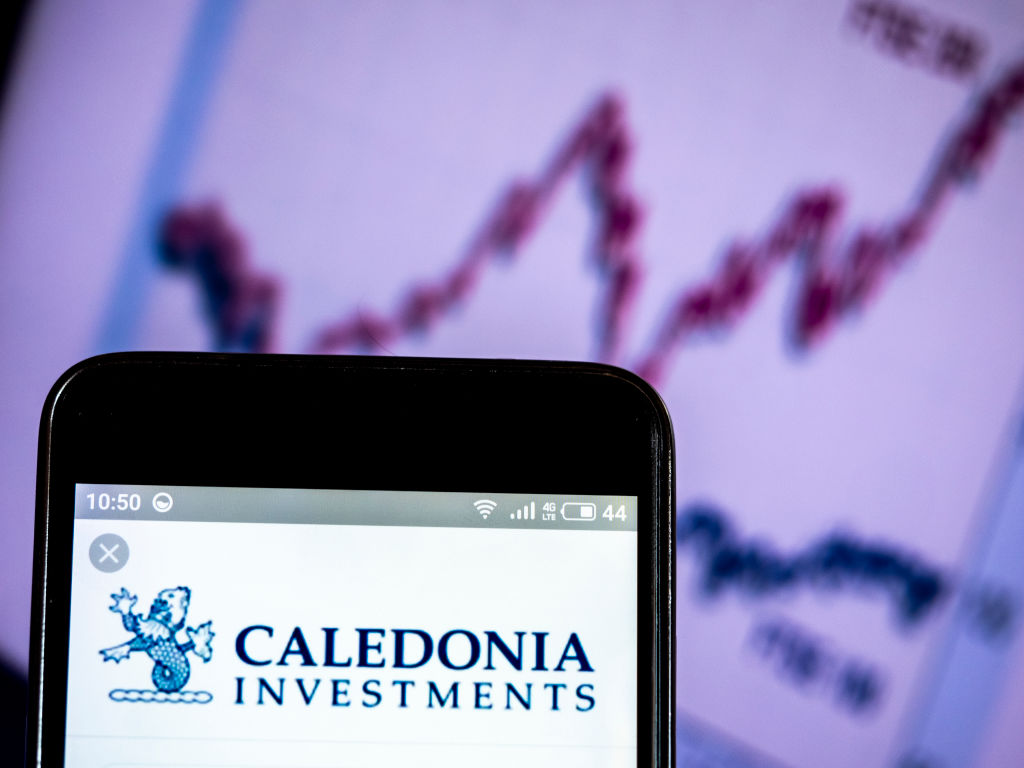The MoneyWeek portfolio of investment trusts – 2025 update
The MoneyWeek portfolio of investment trusts was set up over a decade ago, but widening discounts have held back returns for some of our top investment trusts


The MoneyWeek investment trust portfolio was set up in 2012 with a simple principle: to help readers build a global, all-weather, set-and-forget set of investments. We chose six London-listed investment trusts covering various investment styles, assets and countries.
We’ve made some changes to these trusts over the years, but the underlying approach has always remained the same. The six choices are currently Personal Assets (LSE: PNL), Mid Wynd (LSE: MWY), Scottish Mortgage (LSE: SMT), Caledonia (LSE: CLDN), Law Debenture (LSE: LWDB) and AVI Global (LSE: AGT).
The portfolio returned 9.3% on an equal-weighted basis in 2024, compared with 11% for the FTSE All Share and 22.1% for the MSCI World index. Still, these figures only tell half the story. On an underlying basis, using net asset value (NAV) rather than share price, the portfolio added 12.3%.
Subscribe to MoneyWeek
Subscribe to MoneyWeek today and get your first six magazine issues absolutely FREE

Sign up to Money Morning
Don't miss the latest investment and personal finances news, market analysis, plus money-saving tips with our free twice-daily newsletter
Don't miss the latest investment and personal finances news, market analysis, plus money-saving tips with our free twice-daily newsletter
The gap between NAV and market performance is particularly apparent at Scottish Mortgage and Caledonia. The latter’s share price returned just 0.6% in 2024, while its net asset value increased by 9.6%, thanks to the strong performance of its listed equity portfolio and direct private investments. Scottish Mortgage returned 24% in 2024 on an underlying basis, but a share-price return of 16.8%.
Discounts persist
The continued disconnect between underlying investment returns and share prices has become a persistent and concerning trend for the investment trust sector. The sector’s weighted average discount to net asset value (NAV) has hovered between 15% and 20% for the past two years. While some discounts narrowed last year – notably Edinburgh Worldwide and Baillie Gifford US Growth – the performance of Caledonia and Scottish Mortgage illustrate investors’ continued caution. Caledonia’s discount to NAV expanded from around 30% at the beginning of 2024 to nearly 40% by the end of the year. Before 2020, the discount rarely exceeded 20%.
On the plus side, AVI Global has been making the most of this disconnect. The value-focused trust has built a portfolio of companies and other trusts trading at a deep discount to the underlying NAV. Its biggest winner last year was US private equity giant Apollo, which it sold in November for a total return of 166% over three years – a 41% annualised gain.
At the other end of the spectrum, Law Debenture has traded at a premium to its net asset value for much of the year, and despite its UK value focus, it clocked up the second-best performance in the portfolio. The trust produced a total return of approximately 14.3% (NAV return 12.2%).
Substantial positions in NatWest, Marks & Spencer and Rolls-Royce helped its performance – Rolls-Royce and NatWest returned 92% and 83%, respectively. These results are a great reminder of why value investing is still relevant, especially in unloved markets.
Gold glitters
Personal Assets chalked up a return of 6.6% on a NAV basis and 6.2% on a total return basis. The trust started the year with 10.7% of its portfolio invested in gold bullion, a well-timed decision as the yellow metal returned 27% in 2024. Exposure to high-quality equities (28% of NAV at the end of November) also helped the portfolio, while short-dated bond exposure provided stability. Exposure to inflation-protected bonds (just over a third of the portfolio at the end of November) proved a drag.
Aside from Caledonia, the biggest disappointment in the portfolio was Mid Wynd. We’ve been closely watching this trust – the smallest in the portfolio – for the past three years.
Towards the end of 2023, the trust’s board replaced long-standing portfolio manager Artemis with Lazard Asset Management, which replaced all but two holdings in the portfolio. The changes have yet to yield the desired results. The trust returned just 8% on a NAV basis in 2024, underperforming its benchmark by 14% for the third year in a row. We’ll be keeping an eye on this trust to see if Lazard can turn the performance around.
This article was first published in MoneyWeek's magazine. Enjoy exclusive early access to news, opinion and analysis from our team of financial experts with a MoneyWeek subscription.
Get the latest financial news, insights and expert analysis from our award-winning MoneyWeek team, to help you understand what really matters when it comes to your finances.

Rupert is the former deputy digital editor of MoneyWeek. He's an active investor and has always been fascinated by the world of business and investing. His style has been heavily influenced by US investors Warren Buffett and Philip Carret. He is always looking for high-quality growth opportunities trading at a reasonable price, preferring cash generative businesses with strong balance sheets over blue-sky growth stocks.
Rupert has written for many UK and international publications including the Motley Fool, Gurufocus and ValueWalk, aimed at a range of readers; from the first timers to experienced high-net-worth individuals. Rupert has also founded and managed several businesses, including the New York-based hedge fund newsletter, Hidden Value Stocks. He has written over 20 ebooks and appeared as an expert commentator on the BBC World Service.
-
 Two in five Brits won’t be able to cover basic costs in retirement
Two in five Brits won’t be able to cover basic costs in retirementMillions face a bleak retirement, as a new report from Scottish Widows indicates a significant number will not reach the minimum income level necessary for a basic standard of financial wellbeing in their later years.
-
 Filtronic: a UK success story cashing in on the space race
Filtronic: a UK success story cashing in on the space raceFiltronic has become an all-too-rare Aim success story since it moved down to the junior market
-
 Sizzling sales at Sysco – should you invest in this US food supplier?
Sizzling sales at Sysco – should you invest in this US food supplier?The American food distribution group Sysco is expanding rapidly worldwide and is still reasonably valued
-
 Profiting from the potential of private markets has become more affordable
Profiting from the potential of private markets has become more affordableOpinion Alex Davies, founder and CEO of high-net-worth investment service Wealth Club, tells us where he’d put his money
-
 Jane Birkin's original Hermès bag sells for millions
Jane Birkin's original Hermès bag sells for millionsThe original Hermès bag made for Jane Birkin has sold for €8.6 million – but what’s it for?
-
 Caledonia Investments tackles its discount
Caledonia Investments tackles its discountFamily-controlled trust Caledonia Investments has launched share buybacks and is proposing a stock split
-
 How Labubus took the world by storm
How Labubus took the world by stormThe “blind-box” business model for Labubu, a grinning little monster, is as popular as ever
-
 Debt funds finally have their day in the sun – how to invest
Debt funds finally have their day in the sun – how to investInvestors can now earn equity-like returns from debt funds and with less risk
-
 Investment trust boards are rushing to sell at a discount
Investment trust boards are rushing to sell at a discountPersistent discounts seem to be making investment trust boards too hasty about backing opportunistic offers
-
 Napoleon’s bicorne headgear, the original MAGA hat, could fetch €800,000
Napoleon’s bicorne headgear, the original MAGA hat, could fetch €800,000Collectables Napoleon would not be out of place in Trump’s America, says Chris Carter